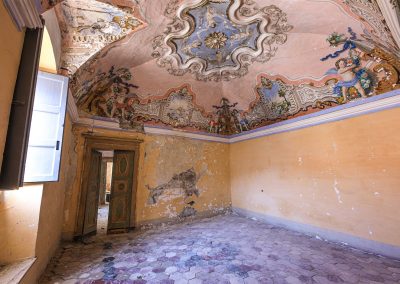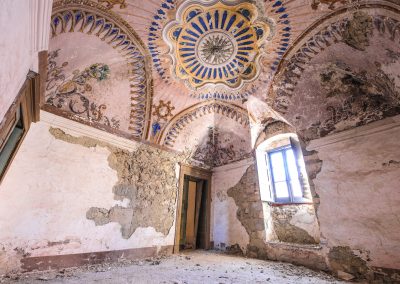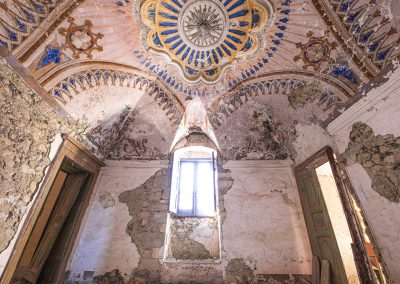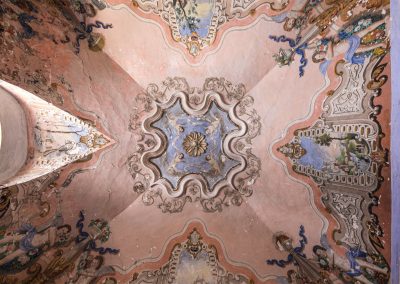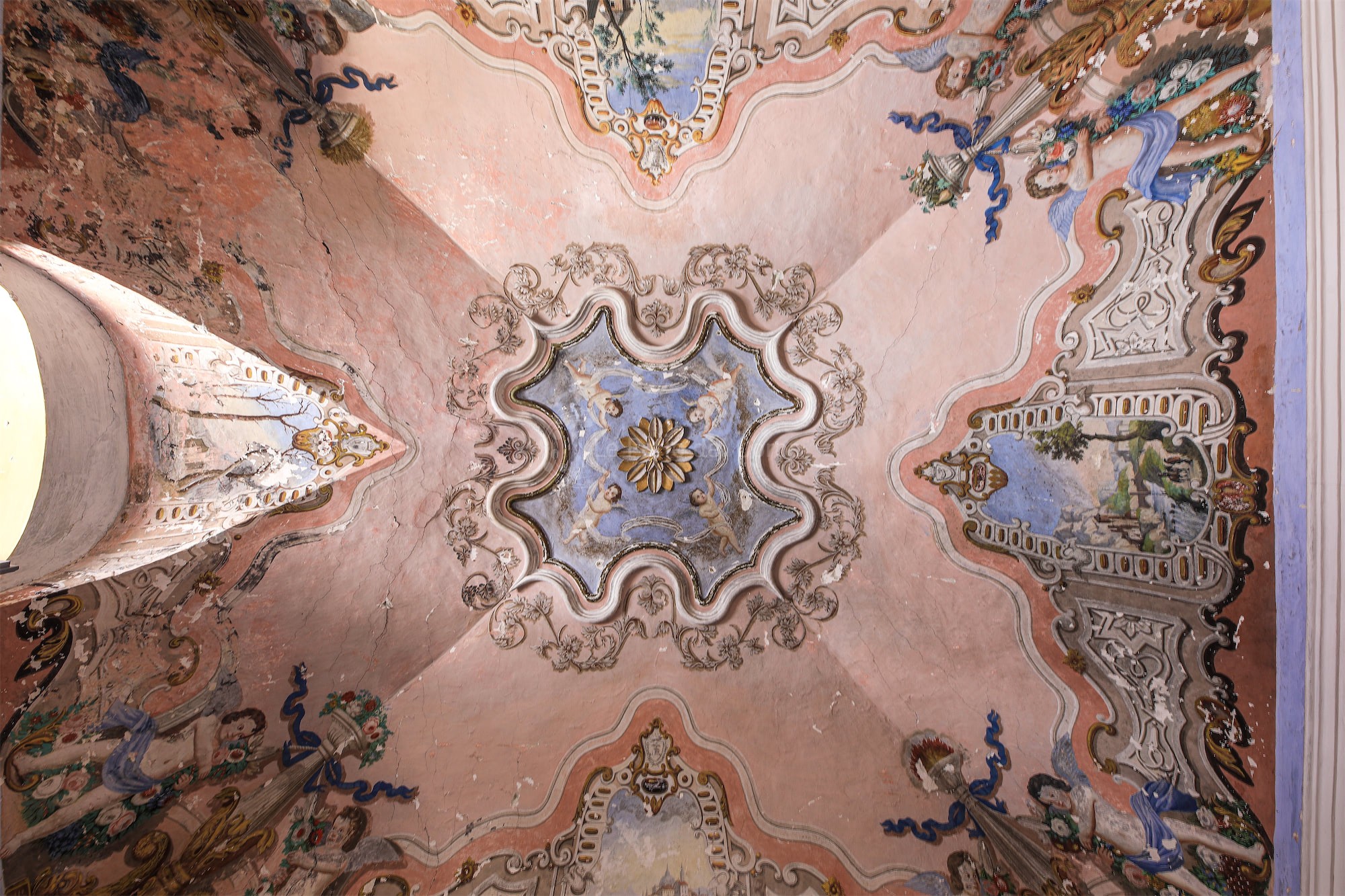
Cargeghe
The Parish House
The Parish House is located in the historical centre of the town of Cargeghe, in via Roma, and is so-called because, for a good part of the 19th and 20th centuries, it was home to the parish priest. The building is property of the Parish of the Holy Saints of Cyricus and Julitta, located a short distance away. By observing a few coats of arms present on the internal decorations, the house was probably donated to the church by one of the original Landlords, a member of the Manca noble family (a story ascribes this dwelling to don Antonio Manca, duke of Asinara (tn* island north of Sardinia), but the state government does not have any historical documentation attributing the property of the building to this noble gentleman. The Manca family, in fact, have never been lords of Cargeghe, which was part of the barony of Ploaghe (tn* name of a bordering territory) belonging to the lords of Castelvì-Aymerich. Even the Canon Spano (tn*Canon: Christian priest with special duties in a cathedral), in the 19th century, defined the dwelling as “House Nurra”… the Nurra family were local nobility of lower rank. Maybe the misunderstanding is due to the fact that, among the various landowners, there had also been a “Manca” family, but they certainly weren’t the famous Manca of the dukedom). The building has preserved the original 18th century structure and decorative features. Originally, a large garden and several warehouses were part of the building, which used to be rented to private citizens as artisan laboratories. There was also a tower, maybe once a deposit for grains or fruit, of which today only the ruins remain.
The interior of the building has the classic “accordion” layout in its volumes, typical of the period of construction, with rooms that follow one another in a closely adjoining sequence. On the vaults of several rooms, painted decorations are still visible, although quite valuable, part of them are visible under layers of lime, probably applied during the first half of the 1900s for reasons of hygiene or to avoid costly renovation work. The floors, made in Sardinian cotto tiles, are in good condition as are the original window fixtures, on which you can still see the signs of old Venetian style decorations, characterised by golden contours. The building needs critical renovations, to prevent the loss of important historical and artistic features still present and to become accessible once again.

